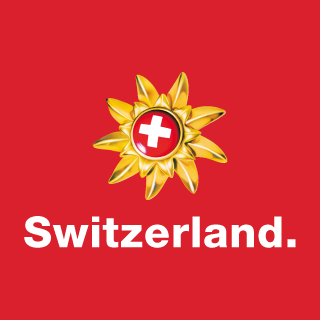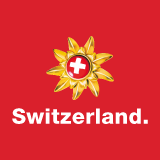Switzerland as an affluent society
Rapid technical progress and economic growth after the 2nd World War resulted in material prosperity. Switzerland succeeded in establishing itself as a major player on the world markets.
Economic boom
Especially in the immediate post-war period intact Switzerland played an important economic role in Central Europe. Economically, Switzerland experienced an unprecedented boom after 1945, which lasted until the 1970s. During this period, exports increased almost tenfold. With an ever-increasing population, Swiss society changed due to increased construction and the mobility of the population. In particular, the Mittelland between Geneva and Lausanne and between Bern and Zurich and St. Gallen lost its rural character through urban sprawl. The country’s growing energy needs were addressed by the construction of five nuclear power plants and the expansion of hydroelectric power production. Economic development, particularly in the service sector, led to a strong increase in private incomes and overall prosperity.Large numbers of foreign workers, in particular Italians, started arriving in Switzerland in the 1950s. The influx dipped in the 1970s as a result of recession, but picked up again in the 1980s.
The expansion of the welfare state (introduction of Old-Age and Survivors Insurance (OASI) in 1947, and Disability Insurance (DI) in 1959) and the reduction of working hours along with the strong economic growth resulted in social peace in Switzerland until the 1990s.
Foreign policy
As before and during the Second World War, Swiss foreign policy was also determined by its neutrality in the post-war era. However, a certain opening was evident and the country joined some international organisations where its neutrality was not compromised: Switzerland participated in the founding of EFTA (European Free Trade Association) in 1960. Switzerland also joined the Council of Europe as a full member in 1963. In 1996 it joined the “Partnership for Peace” established by NATO after the collapse of communism.Although Geneva houses the European headquarters of the United Nations (UNO) and Switzerland has long belonged to many UN agencies, it was not until 2002 that Switzerland joined the UN as a full member.
To date, however, Switzerland is not a member of the European Union (EU). The relationship between Switzerland and the EU is governed by bilateral agreements.
Women's movement
The position of Swiss women slowly improved over the course of the 20th century, but women’s rights generally lagged behind those of their counterparts in other western countries.Swiss women only got the vote at national level in 1971. They were the last in Europe to get the vote (apart from Liechtenstein). This should be qualified by mentioning that in other countries the introduction of women's suffrage was not decided at the ballot box.
Also late in coming was the national legislation for compensation during maternity leave. Although a corresponding article was already enshrined in the Constitution in 1945, it was only in 2004 that the majority voted in favour of it. Previous referenda on the issue of Swiss-wide maternity leave had been rejected.
Until then, most employers did pay mothers a proportion of their salary for a period after the birth of a child, but this was not an obligation.
Canton Geneva did not wait for the national legislation, and it introduced its own maternity insurance in 2001 – the only canton to do so.
Since 1 July 2005, employed mothers in Switzerland receive 80% of their salary for 14 weeks after the birth of a child. This does not apply to non-working mothers.
The Jura question
Although the external borders of Switzerland remained unchanged, it gained a new canton in 1979: Canton Jura.This was the result of about 30 years of pressure from separatists in the French-speaking area of Canton Bern. The northern part of the Bernese Jura is strongly Roman Catholic – unlike most of the canton’s German-speaking majority – and many of its inhabitants felt they suffered both religious and linguistic discrimination.
There was opposition to the separation of northern from southern Jura – not only by the Bernese government but also from within northern Jura itself, as the Protestant and also the German-speaking minority in northern Jura were of the view that Canton Bern represented their interests better.
After a years-long struggle, the creation of the canton of Jura was decided by referendum in 1978 (comprising three of the seven districts of the Jura).
Youth riots of the 1980s
After the protests at the end of the sixties, the spring of 1980 once again saw youth riots in Switzerland – almost at the same time as those in the Netherlands and Germany.In May 1980, the Red Factory Action Group organised a demonstration in Zurich against the loan approved by the City Council to rebuild the opera house ("against a unilateral bourgeois cultural policy"). When the police showed up the verbal protest turned into brute force. The Zurich protest movement battled for nearly two years, partly supported by the left parties, intellectuals and artists, for self-determined premises outside of state structures.
The Zurich "movement" called for an autonomous youth centre (AJZ) and found imitators in other Swiss cities. Also in Lausanne, Basel, Bern, St. Gallen, Winterthur and Lucerne there were repeated violent clashes between authorities, police and protesters in the late 1980s.
The movements of the 1980s impacted society in many ways: they sensitised society to the concerns of young people and promoted the development of independent media and cultural projects. The alternative culture is now officially recognised and new lifestyles are widely accepted.
Changes in the political landscape
When, in the 1930s, radical parties began to threaten the democratic system, those parties that favoured democracy started to look for consensus rather than confrontation so as to save democracy. The external threat also paved the way to an understanding between unions and employers. In 1937, the class struggle led to a peace accord on social partnership.The Social Democrats were close to the political centre, and did an about-turn in areas such as national defence. In return, the "bourgeois bloc" accepted the Social Democrats as a legitimate left-wing opposition party. The successful referendum on federal financial reform in 1938 demonstrated for the first time the viability of a broad coalition of political parties and associations.
The Social Democratic Party obtained its first seat in the Federal Council in 1943 with the election of Ernst Nobs. After 1959, the seats in the Federal Council were apportioned according to the "magic formula" with the Social Democratic Party (SP), the Free Democrats (FDP) and the Christian Democrats (CVP) each having two members, and the Party of Farmers, Traders and Independents (BGB, now the Swiss People's Party SVP), having one.
Related links
More about Swiss history

